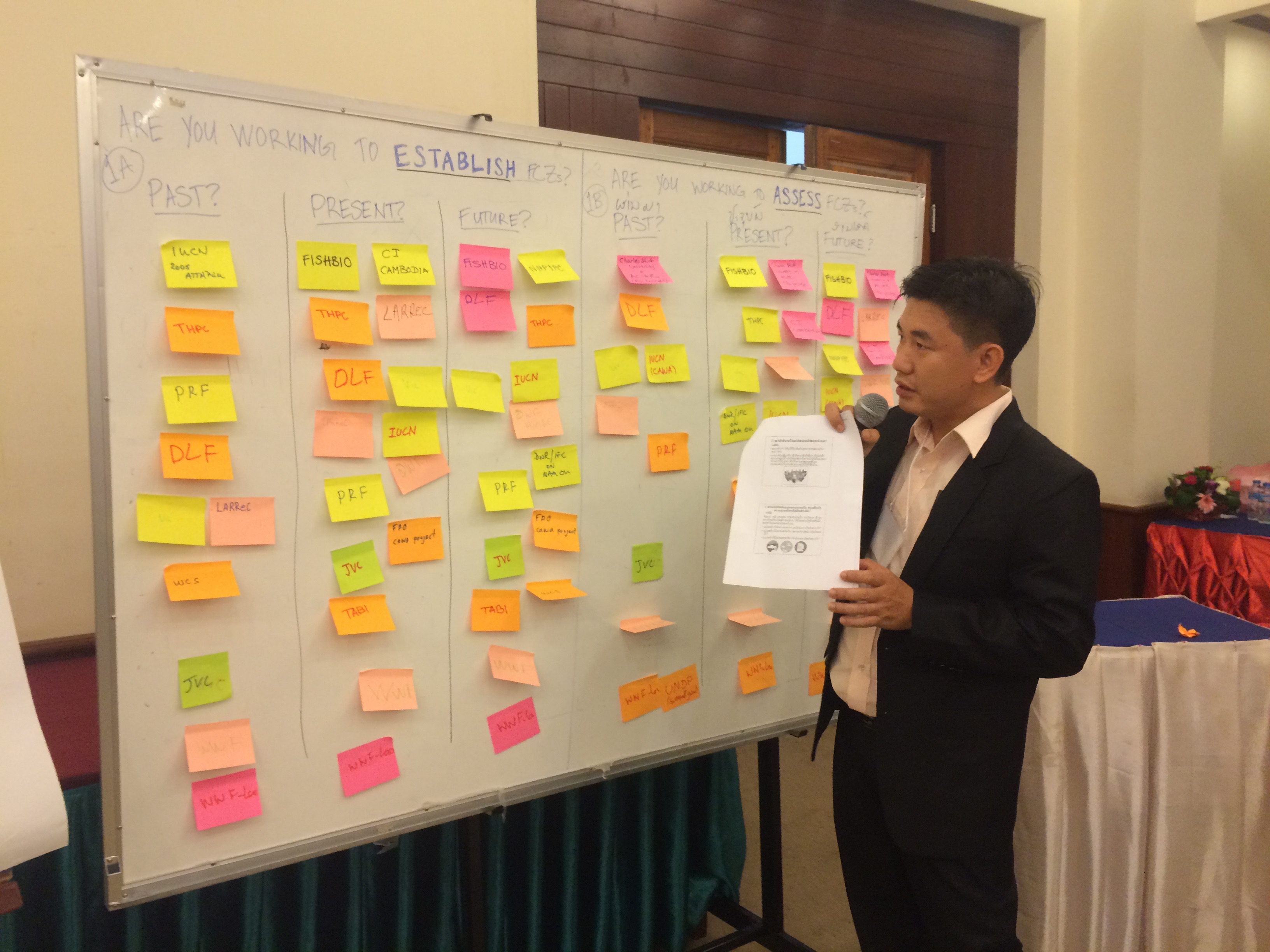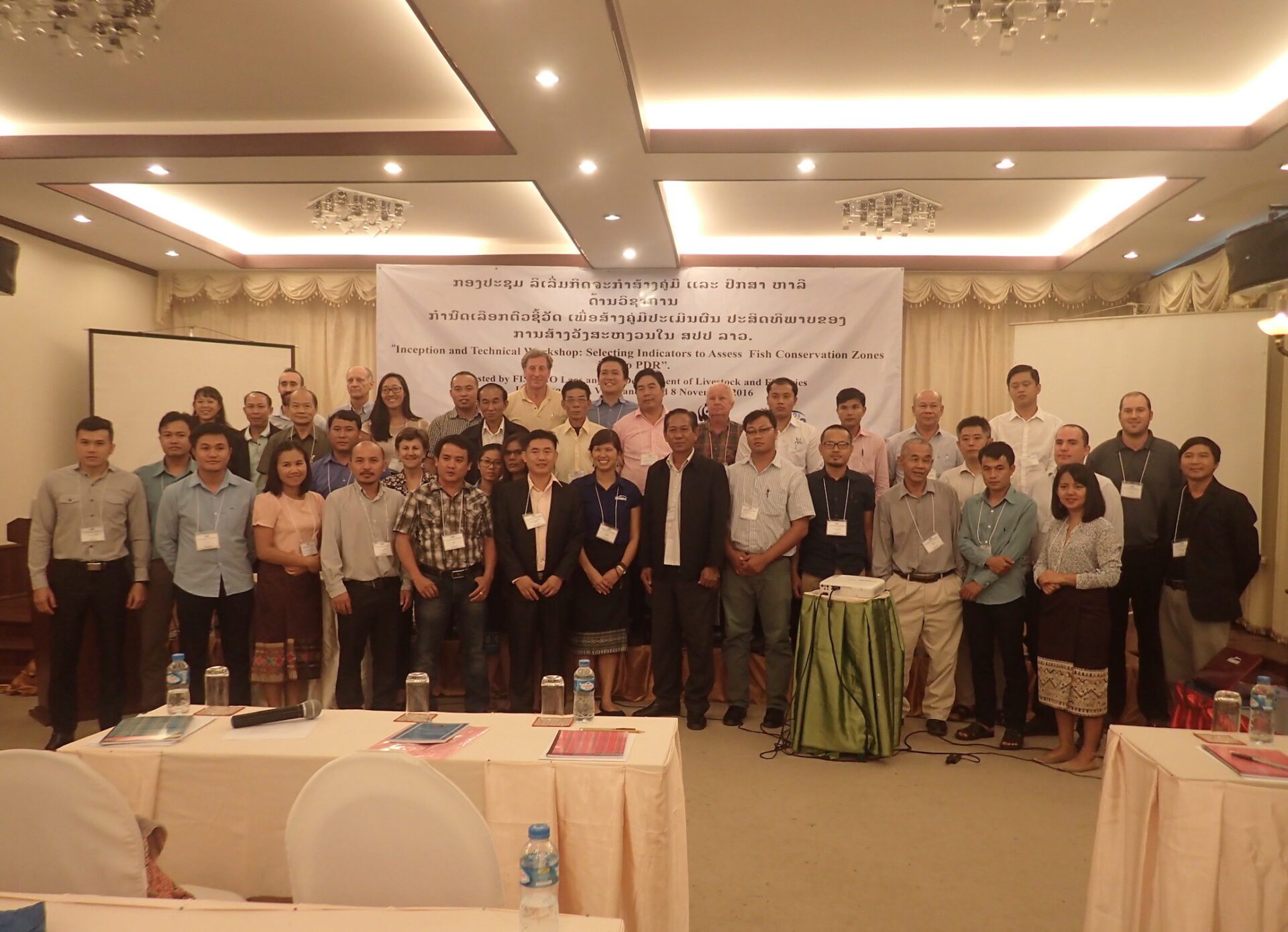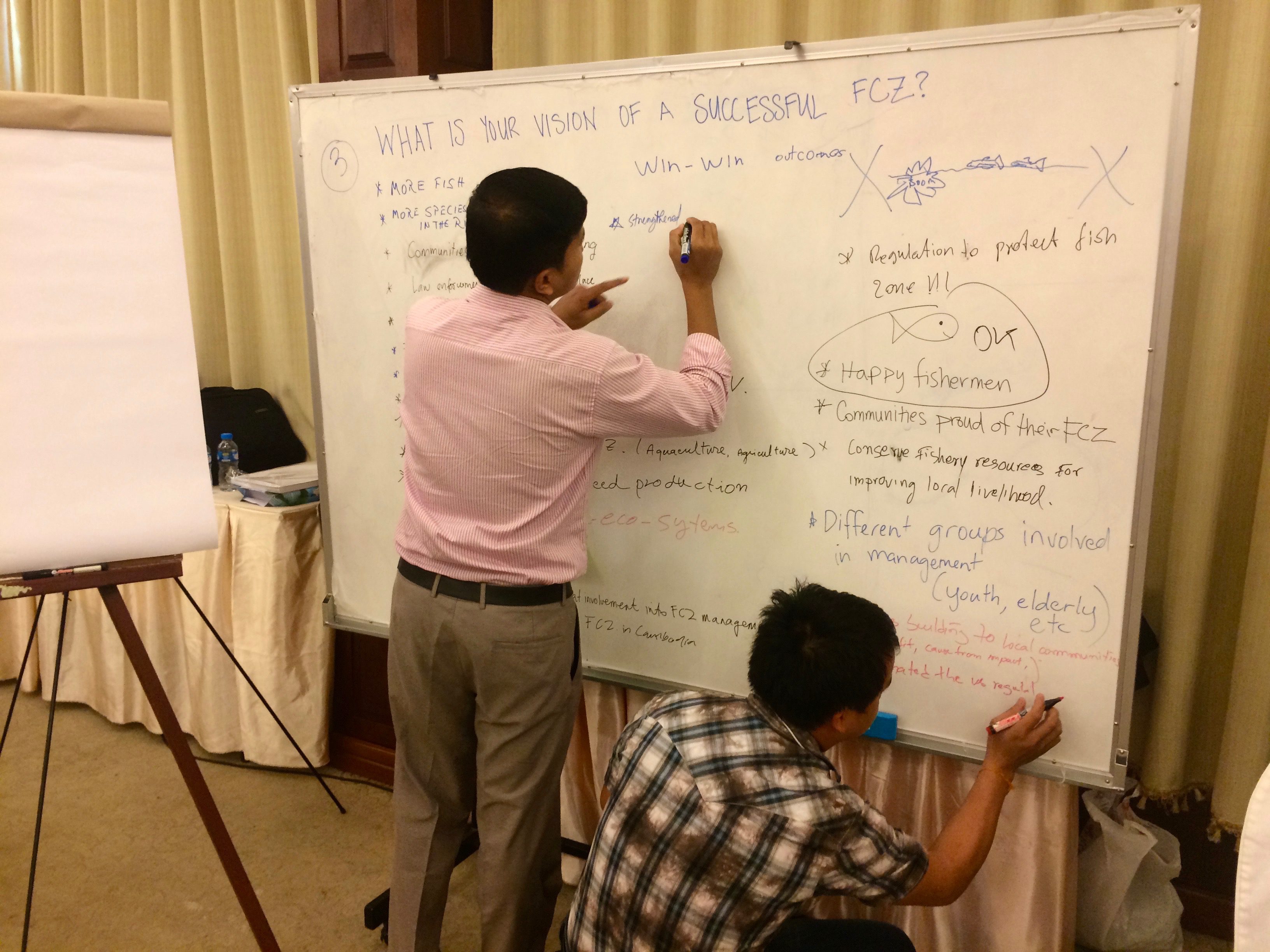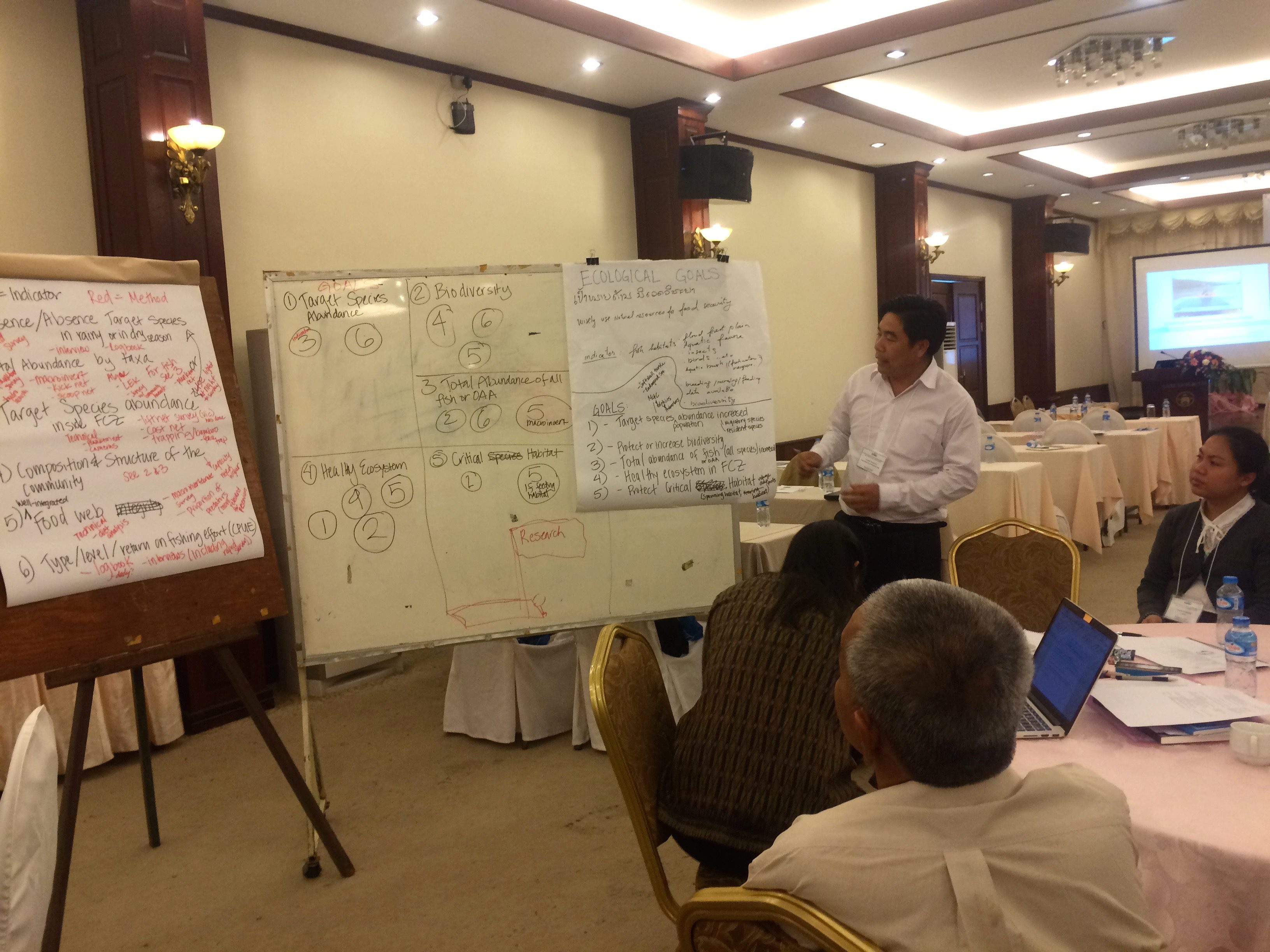Monday November 28, 2016
 Just like people need regular health checkups, a protected area needs regular assessments to make sure it’s performing successfully. FISHBIO staff made this point during a recent workshop we hosted in Vientiane, Laos, with the Lao Department of Livestock and Fisheries. The workshop served as a kick-off for our project to create a guidebook for assessing Fish Conservation Zones (FCZs) in Lao PDR with funding from the Critical Ecosystem Partnership Fund. The goals of the workshop were to introduce the project to a broad group of stakeholders working on FCZs, and also to receive input from workshop participants on relevant indicators of FCZ success that they felt should be included in the guidebook. These indicators are like the vital signs of a healthy FCZ, and could include measurements such as fish abundance, community standard of living, or the level of FCZ regulation enforcement. The workshop was attended by more than 20 groups representing non-profit, government, and private sectors in Laos, as well as two members of Conservation International in Cambodia, and a researcher from Charles Sturt University in Australia.
Just like people need regular health checkups, a protected area needs regular assessments to make sure it’s performing successfully. FISHBIO staff made this point during a recent workshop we hosted in Vientiane, Laos, with the Lao Department of Livestock and Fisheries. The workshop served as a kick-off for our project to create a guidebook for assessing Fish Conservation Zones (FCZs) in Lao PDR with funding from the Critical Ecosystem Partnership Fund. The goals of the workshop were to introduce the project to a broad group of stakeholders working on FCZs, and also to receive input from workshop participants on relevant indicators of FCZ success that they felt should be included in the guidebook. These indicators are like the vital signs of a healthy FCZ, and could include measurements such as fish abundance, community standard of living, or the level of FCZ regulation enforcement. The workshop was attended by more than 20 groups representing non-profit, government, and private sectors in Laos, as well as two members of Conservation International in Cambodia, and a researcher from Charles Sturt University in Australia.
Presentations from FISHBIO staff repeatedly stressed the importance of identifying the goals and objectives of an FCZ before selecting relevant indicators to measure, because assessing success first requires defining what “success” means for each FCZ. As part of one interactive exercise, workshop participants were asked to share their vision of a successful FCZ. Attendees wrote statements like “more species of fish in the river,” “law enforcement and patrolling in place,” and, “FCZ managed by equal participation of men and women.” Participants were then asked to review a list of 50 potential indicators based on a previously developed marine protected area assessment framework (Pomeroy et al. 2004) and a literature review conducted by FISHBIO. The indicators fell into three categories (ecological, socioeconomic, and governance), and participants divided into three groups that reflected these categories. Each group was asked to discuss potential goals and objectives of FCZs in Laos that related to their category, and to select the top five most important indicators related to those goals. These small-group discussions also provided an opportunity for workshop attendees to share their experiences related to FCZs, and discuss potential methods for measuring the proposed indicators.
At the end of the workshop, each group shared the outcomes of their discussion. The ecological group’s list of proposed indicators included topics such as the abundance of key species or groups of species, return on fishing effort, and the composition of the aquatic community. The socioeconomic group selected indicators that focused on community perceptions, such as values and beliefs about aquatic resources, understanding of human impact on natural resources, and the distribution of scientific or formal knowledge to the community. The indicators selected by the governance group focused on foundational elements such as the existence of an FCZ management plan, the existence of signs and other administrative resources, and local understanding of FCZ regulations.
The workshop provided a useful venue for groups to come together to discuss FCZs, which have become a widespread tool in Laos for sustainable fisheries management and conservation. Many participants commented on how the proposed guidebook would be very useful in Laos, and the staff from Conservation International in Cambodia said the guidebook would also be relevant to their work on FCZs in Tonle Sap Lake. For FISHBIO, organizing a workshop of this size in Laos was a big milestone for our staff, and we were very happy with the outcome and positive response. Our next step will be to synthesize the feedback we received from the workshop, along with that of additional experts, to create a draft version of the FCZ assessment guidebook, which will then be pilot-tested in the field. We look forward to sharing updates of our project through the FISHBIO website and the Mekong Fish Network!
This post featured in our weekly e-newsletter, the Fish Report. You can subscribe to the Fish Report here.



